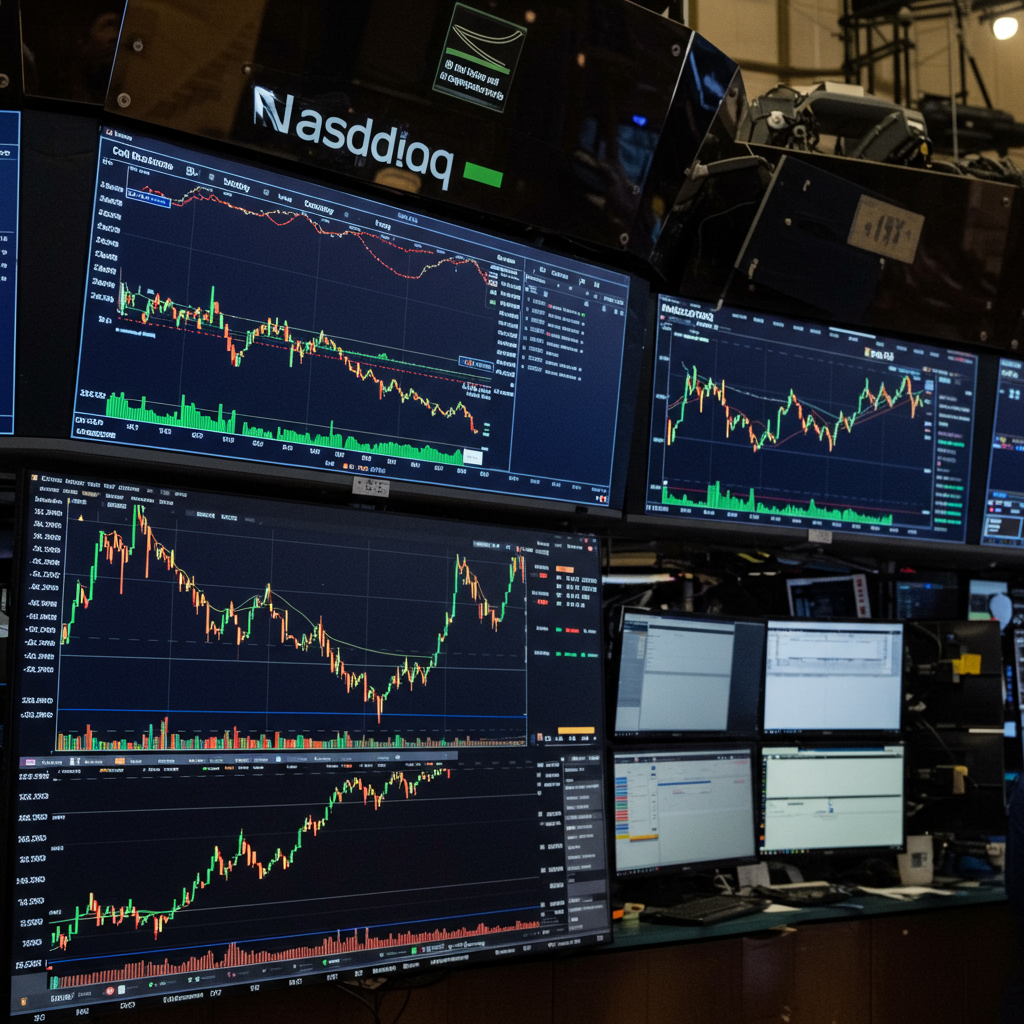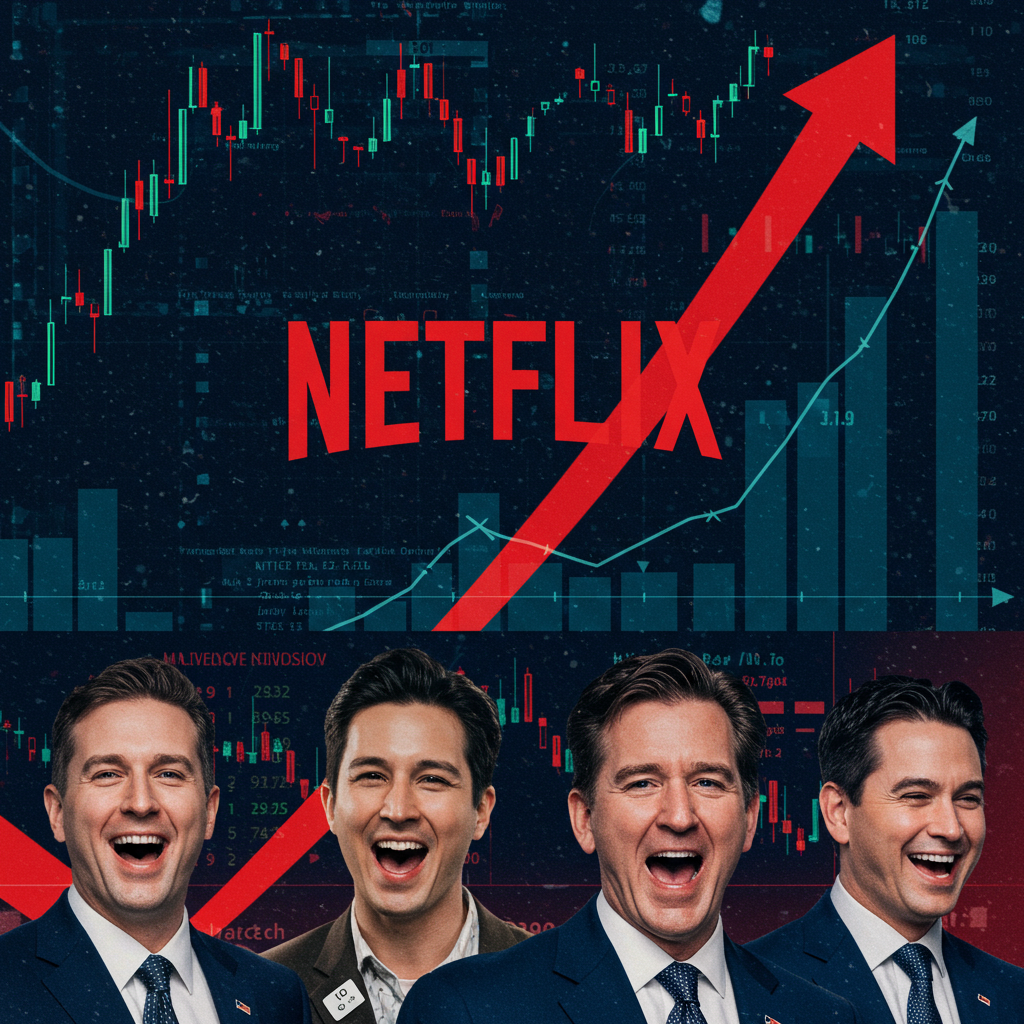U.S. stock markets celebrated a remarkable day of gains, propelling the S&P 500 and Nasdaq Composite to close at fresh record highs. The robust performance came immediately after the release of a better-than-expected June jobs report, signaling underlying resilience in the American economy despite shifting global trade landscapes and geopolitical uncertainties. Investors reacted with clear optimism, pushing major indexes significantly higher and setting a positive tone for the end of a holiday-shortened week.
market Triumphs: Records Fall as Stocks Rally
Thursday’s trading session saw the Dow Jones Industrial Average climb significantly. It advanced by 344.11 points, representing a 0.77% increase, ultimately settling at 44,828.53. The broad S&P 500 index also posted a solid gain, adding 0.83% to end the day at 6,279.35. Meanwhile, the technology-heavy Nasdaq Composite jumped even more, rising by 1.02% to close at 20,601.10. Both the S&P 500 and Nasdaq Composite finished the day reaching new all-time closing records.
The market’s upward trajectory was evident from the start. Shortly after the opening bell, the S&P 500 was up 0.4% and the Nasdaq Composite had gained 0.7%. Both indexes recorded new all-time intraday highs early in the session. The Dow Jones Industrial Average also saw early gains, climbing 87 points, or 0.2%.
The Driving Force: Unpacking the June Jobs Report
The catalyst for this widespread market optimism was the latest data from the Bureau of labor Statistics. The report, released on Thursday, revealed that nonfarm payrolls rose by 147,000 in June. This figure comfortably surpassed the expectations of economists polled by Dow Jones, who had forecast an increase of just 110,000 jobs. It also came in slightly ahead of the upwardly revised gain of 144,000 jobs reported in May.
Adding to the positive picture, the national unemployment rate unexpectedly fell to 4.1%. This was better than economists’ projections, which had anticipated a slight increase to 4.3%. The combination of strong job creation and a falling unemployment rate painted a picture of a labor market that remained robust, easing concerns about potential economic slowdowns spurred by recent policy changes or global factors. The data reaffirmed the Federal Reserve’s assessment of an economy that, while potentially slowing, was still operating on solid ground.
Jobs Report Ripples: Impact on Fed and Bonds
The strength of the June jobs report had immediate implications for monetary policy expectations. The solid employment figures significantly reduced expectations for the Federal Reserve to cut interest rates in the near future. Prior to the report, some market participants had priced in a possibility of a rate cut at the Fed’s upcoming meeting later in the month.
However, following the data release, the likelihood of a July rate reduction plummeted. According to CME Group’s FedWatch tool, traders in fed funds futures were pricing in a roughly 95% chance that the central bank would hold rates steady at its upcoming meeting. This shift suggests that the market now widely believes the Fed will keep its benchmark rate unchanged, at least until later in the year, if at all.
Jed Ellerbroek, a portfolio manager at Argent Capital Management, highlighted this shift. He noted that the primary takeaway from the employment report seemed to be the virtual certainty that the Fed would not be cutting rates in July. He even questioned whether a rate cut would happen at any point during the current year based on the strength of the data. This reinforced a sentiment that the tight labor market might give the Fed more room to maintain its current stance for longer. The bond market reacted negatively to the strong jobs report, with yields spiking as traders pulled back on rate cut expectations. Short-dated bonds underperformed, and two-year Treasury yields climbed, reflecting the near-zero probability of a July Fed rate reduction.
Navigating Headwinds: Trade, Tariffs, and Policy
While the jobs report was the primary driver of Thursday’s US stock market rally, the market also navigated a complex landscape of evolving trade policy and legislative developments. The optimism fueled by the strong employment data helped the market shrug off fears raised just a day earlier when private payroll data from ADP showed a decrease, leading some to worry the economy was faltering under rapid policy changes. Thursday’s official government report effectively countered that notion.
Amidst the positive jobs news, investors continued to monitor developments on the trade front. Following President Donald Trump’s announcement of a U.S.-Vietnam trade agreement, attention turned to potential future deals. The president’s early July deadline for his 90-day tariff pause was approaching, and there was anticipation regarding whether he might implement tougher measures if negotiations weren’t successful.
Jed Ellerbroek acknowledged that while real tariff impacts would be felt by many businesses, he believed the market was ultimately taking an optimistic view and could digest these challenges without significant trouble. Treasury Secretary Scott Bessent echoed sentiments regarding trade, stating that the decision on extending tariff pauses or reverting to higher rates rested with President Trump if deals weren’t reached by the deadline. Bessent also downplayed the negative impact of tariffs thus far, noting that despite predictions to the contrary, tariffs haven’t hurt the economy or the market, citing the record highs in U.S. stocks as evidence.
Legislative progress in Washington also remained a focus. The market tracked the advancement of Trump’s tax megabill. Having passed the Senate earlier in the week, the bill returned to the House and was advanced towards a final vote by the Republican-controlled chamber on Thursday. This legislative movement added another layer of policy context to the market’s performance.
A Week of Gains and Key Stock Moves
Thursday marked a shortened trading session, with the New York Stock Exchange and the Nasdaq closing early at 1 p.m. ET. U.S. markets were set to be closed on Friday in observance of Independence Day. Despite the shortened week, all three major U.S. averages finished in positive territory. The S&P 500 and Nasdaq Composite saw weekly gains of 1.7% and 1.6% respectively. The Dow Jones Industrial Average posted an even stronger gain for the period, rising by 2.3% week-to-date.
Beyond the index movements, several individual stocks made notable moves. Burford Capital, a litigation finance company, surged around 19% this week. This rise followed a decision to strip a provision that would make litigation finance taxable from a reconciliation bill in Congress. On the other hand, Centene hit a new 52-week low, trading at levels not seen since March 2017. The broader small-cap Russell 2000 index also showed strength, rising 0.6% on Thursday morning and moving into positive territory for the year, having rallied nearly 24% from its April low.
Specific analyst actions also drew attention. Needham analyst Laura Martin upgraded Meta Platforms from underperform to hold, citing the company’s strong labor productivity metrics compared to peers. However, she maintained a hold rating due to concerns about slowing labor productivity growth coinciding with increased spending on capital expenditures and investments in AI.
In significant stock news, cloud software maker Datadog saw its shares climb following the announcement of its upcoming inclusion in the S&P 500 index. Wedbush analyst Dan Ives hiked his price target for Datadog to $170 from $140, predicting upside of 26%. Ives noted Datadog’s selection over other contenders like Robinhood or Applovin, highlighting its momentum in the observability space, particularly with AI applications. Datadog is set to replace Juniper Networks in the index next week.
Short interest trends provided another interesting dimension to the market’s behavior. According to S3 Partners, a firm tracking short interest, short interest in both the S&P 500 and Nasdaq-100 has been rising alongside the rally. This suggests a potential reversal strategy by some investors, possibly hedging against gains or expressing skepticism about the market’s recovery. Despite the rally to new highs, S3 Partners noted the S&P 500 was only up about 6% for the year through Wednesday, underperforming most global markets which had posted significantly larger gains.
Online travel company Tripadvisor also saw a jump in share price after reports surfaced that activist investor Starboard Value had taken a stake of over 9%. This news signaled potential changes or pressure for the company, impacting its stock performance.
Overall, the market’s strong finish to the holiday-shortened week was a clear indication that positive economic data, specifically the June jobs report, was capable of driving significant gains and overcoming concerns related to ongoing trade tensions and other policy uncertainties, pushing major indexes to new heights.
Frequently Asked Questions
Why did the US stock market reach record highs this week?
The primary driver for the US stock market rally and the S&P 500 and Nasdaq Composite hitting record highs was a robust June jobs report. The Bureau of Labor Statistics reported that nonfarm payrolls increased by a better-than-expected 147,000 jobs in June, and the unemployment rate fell to 4.1%. These strong figures fueled investor optimism about the health and resilience of the U.S. economy, leading to widespread buying across the market and pushing indexes to new peak levels.
What specific numbers from the June jobs report drove investor optimism?
Investor optimism was specifically buoyed by two key figures from the June jobs report. First, the creation of 147,000 new nonfarm payrolls significantly exceeded the consensus forecast of 110,000. Second, the unemployment rate unexpectedly decreased to 4.1%, falling below the expected rate of 4.3%. The combination of strong job growth and a lower-than-anticipated unemployment rate signaled a tightening labor market and economic strength, reducing concerns about a potential slowdown and boosting market confidence.
How did the strong jobs report impact expectations for the Federal Reserve?
The strong June jobs report significantly reduced expectations for a near-term Fed rate cut. With the labor market showing unexpected strength, market participants concluded that the Federal Reserve would feel less pressure to lower borrowing costs to stimulate the economy. According to the CME Group’s FedWatch tool, the probability of a rate cut at the Fed’s meeting later in July dropped substantially, with traders pricing in roughly a 95% chance that the central bank would hold rates steady. This shift suggests the market anticipates the Fed maintaining its current monetary policy stance for longer than previously expected.
Conclusion
In summary, the U.S. stock market concluded a holiday-shortened week on a decidedly strong note, with the Dow Jones posting solid gains and both the S&P 500 and Nasdaq Composite reaching unprecedented record highs. The surge was overwhelmingly attributed to the positive surprise delivered by the June jobs report, which showcased unexpected strength in the labor market and instilled fresh investor optimism. While factors like evolving trade policy, tariff discussions, and legislative progress on the tax bill remained part of the market narrative, the solid economic data served as the dominant force, overriding previous concerns and propelling indexes higher. The performance underscored the market’s current focus on fundamental economic indicators and its capacity to rally even amidst ongoing global complexities.




